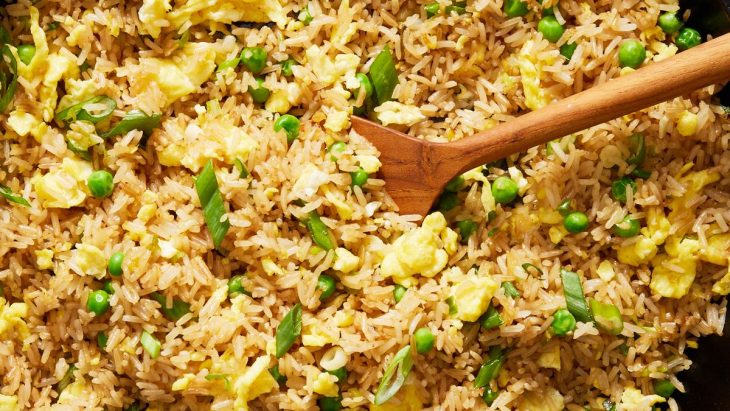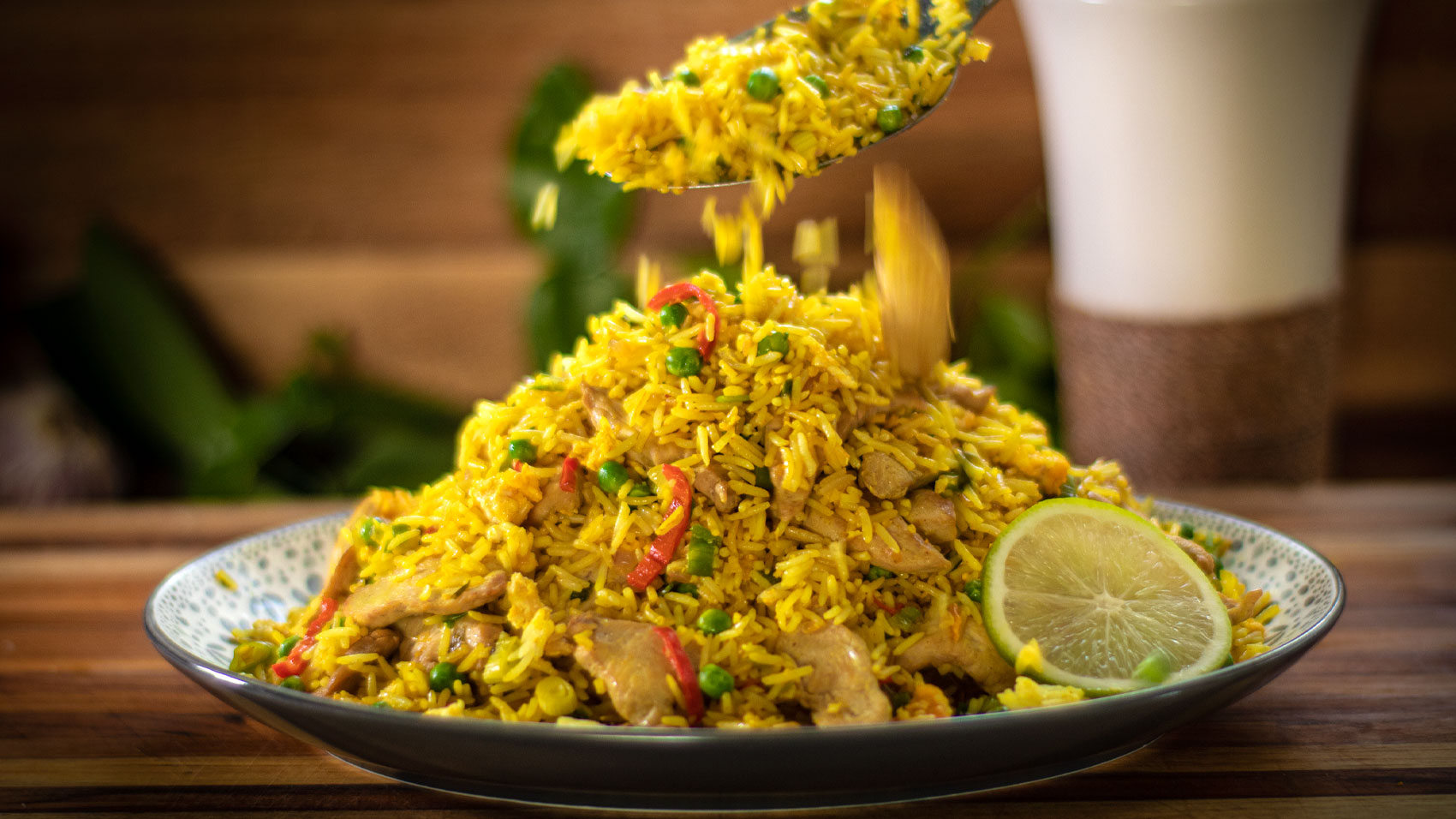
Fried rice is a popular dish enjoyed in many parts of the world. Its versatility, delicious flavors, and ability to incorporate a variety of ingredients make it a go-to choice for many people. In this article, we will explore 15 nutrition facts about fried rice. We’ll delve into its calorie content, macronutrient composition, and other important details to help you make informed choices about incorporating this tasty dish into your diet.
Calorie Content
The calorie content of fried rice can vary depending on the ingredients used and the portion size. On average, a cup of fried rice can contain approximately 200 to 400 calories. The calorie count may increase if additional fats or high-calorie ingredients like meat or seafood are added.
Carbohydrate Content
Fried rice is primarily made up of carbohydrates. Rice, the main ingredient, is a starchy grain that provides a significant amount of carbs. A cup of fried rice typically contains around 35 to 50 grams of carbohydrates, depending on the recipe and any added vegetables or sauces.
Protein Content
Fried rice can be a source of protein, especially if it includes ingredients like eggs, chicken, shrimp, or tofu. The protein content can vary based on the additions and portion size. On average, a cup of fried rice may contain approximately 5 to 15 grams of protein.
Fat Content
The fat content of fried rice depends on the cooking method and ingredients used. While rice itself is low in fat, additional oils or fats used for cooking can increase the overall fat content. On average, a cup of fried rice may contain around 5 to 10 grams of fat.
Fiber Content
The fiber content in fried rice can vary depending on the ingredients and cooking method. Brown rice, which is a healthier alternative to white rice, contains more fiber. However, fried rice made with white rice typically provides around 1 to 2 grams of dietary fiber per cup.

Sodium Content
Sodium content in fried rice can be influenced by the type of soy sauce, seasonings, and other ingredients used. Commercially prepared fried rice or restaurant versions may contain higher levels of sodium. On average, a cup of fried rice can contain around 400 to 800 milligrams of sodium.
Vitamin and Mineral Content
Fried rice can contribute to your intake of certain vitamins and minerals, depending on the ingredients used. Vegetables like carrots, peas, and bell peppers provide vitamins A and C, while eggs can be a source of vitamins B12 and D. Additionally, rice itself contains small amounts of minerals like magnesium and selenium.
Vegetable Nutrients
Fried rice can be an excellent way to incorporate vegetables into your diet. Vegetables provide essential vitamins, minerals, and dietary fiber. The nutrient content will vary based on the vegetables used in the recipe, but popular choices like carrots, peas, and bell peppers are rich in vitamins A and C.
Protein Sources
Protein sources in fried rice can include eggs, chicken, shrimp, beef, or tofu. These protein options offer essential amino acids necessary for muscle repair and growth. The choice of protein can impact the overall nutritional profile of the dish.
Healthy Cooking Methods
Choosing healthier cooking methods can make a difference in the nutritional content of fried rice. Instead of deep-frying, opt for stir-frying with minimal oil or use healthier alternatives like olive oil or avocado oil. Adding a variety of colorful vegetables can boost the nutritional value of the dish.
Fiber-Rich Alternatives
Using whole grains like brown rice or incorporating other grains like quinoa can increase the fiber content of fried rice. Whole grains provide more dietary fiber, which promotes digestion and helps maintain a healthy gut.

Portion Control
While fried rice can be a delicious and satisfying dish, it’s important to practice portion control. By being mindful of your serving size, you can enjoy the flavors of fried rice while maintaining a balanced diet and managing your calorie intake.
Homemade vs. Restaurant Fried Rice
Preparing fried rice at home gives you more control over the ingredients and cooking methods. You can reduce the amount of added oils, use healthier alternatives, and customize the ingredients to suit your dietary preferences. Restaurant versions of fried rice may be higher in calories, sodium, and unhealthy fats.
Healthy Modifications
To make fried rice healthier, consider incorporating more vegetables, reducing the amount of oil used, and choosing lean protein sources. You can also use low-sodium soy sauce or opt for healthier alternatives like coconut aminos.
Nutritional Variations
Different variations of fried rice exist across different cuisines. For example, Japanese-style fried rice, known as “Yakimeshi,” often includes a mix of vegetables, protein, and soy sauce. Thai-style fried rice, known as “Khao Pad,” may feature ingredients like fish sauce, basil, and chili peppers. Exploring these variations can provide a range of flavors and nutritional profiles.
Conclusion
Fried rice is a delicious and versatile dish that can be enjoyed as part of a balanced diet. While it is important to be mindful of portion sizes and ingredients used, fried rice can provide essential carbohydrates, protein, and other nutrients. By making healthier choices, such as using whole grains, incorporating more vegetables, and practicing portion control, you can enjoy the flavors of fried rice while supporting your overall health and well-being.
Frequently Asked Questions (FAQs)
Can I make fried rice without using oil?
Yes, it is possible to make fried rice without using oil. Instead of frying the ingredients, you can steam or boil them and then stir them together with cooked rice. This method reduces the fat content of the dish.
Is fried rice a healthy choice for a meal?
Fried rice can be a healthy choice for a meal when prepared with nutritious ingredients and cooked using healthy cooking methods. Incorporating a variety of vegetables and lean protein sources can enhance its nutritional value.
Can I make fried rice with brown rice instead of white rice?
Absolutely! Brown rice is a healthier alternative to white rice as it contains more fiber, vitamins, and minerals. You can substitute brown rice in your fried rice recipe to make it more nutritious.
Is fried rice suitable for a vegetarian or vegan diet?
Yes, fried rice can be suitable for both vegetarian and vegan diets. By omitting animal protein sources and using plant-based ingredients like tofu or tempeh, you can create delicious vegetarian or vegan versions of fried rice.
Can I freeze leftover fried rice?
Yes, you can freeze leftover fried rice. Allow it to cool completely, portion it into airtight containers or freezer bags, and freeze it for up to three months. Thaw and reheat it thoroughly before consuming it.
Was this page helpful?
Our commitment to delivering trustworthy and engaging content is at the heart of what we do. Each fact on our site is contributed by real users like you, bringing a wealth of diverse insights and information. To ensure the highest standards of accuracy and reliability, our dedicated editors meticulously review each submission. This process guarantees that the facts we share are not only fascinating but also credible. Trust in our commitment to quality and authenticity as you explore and learn with us.
